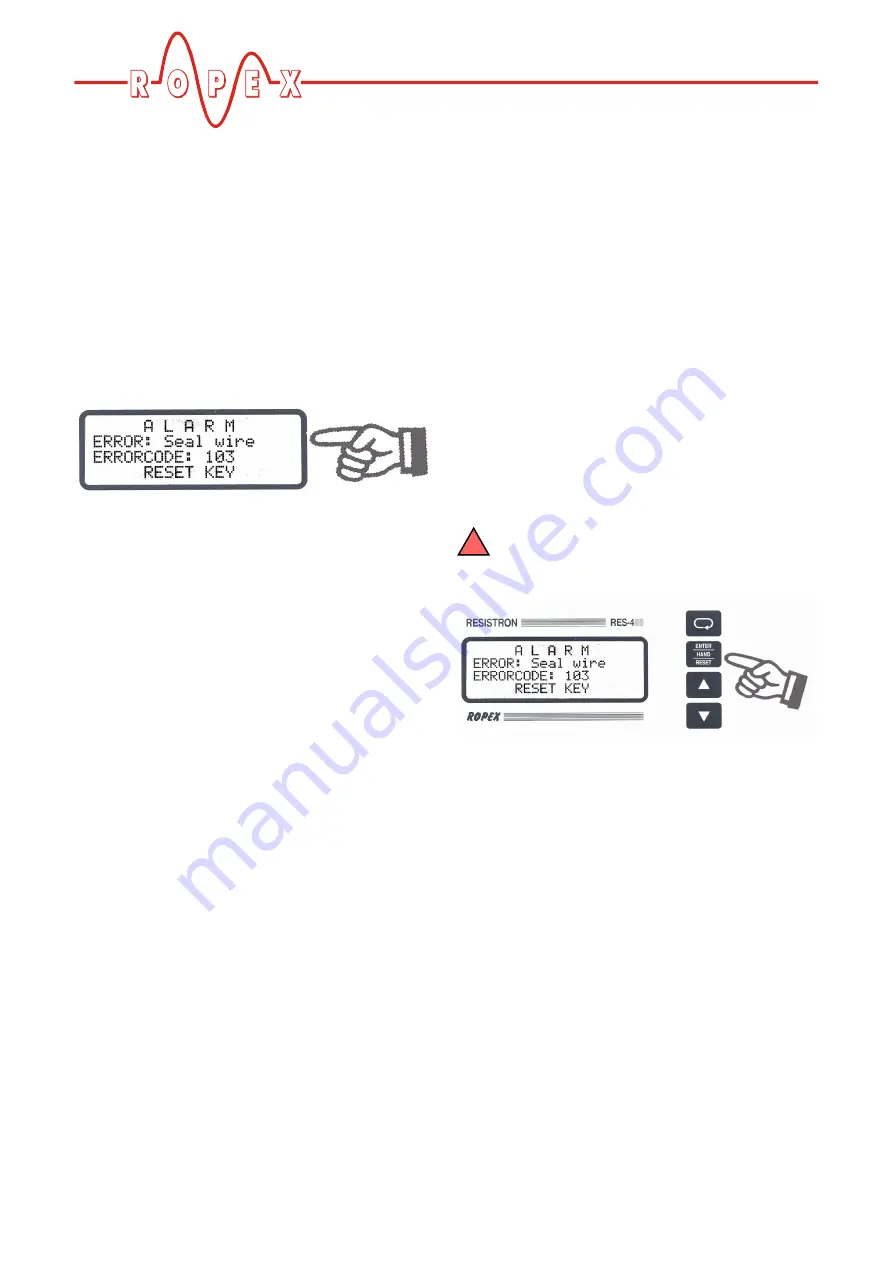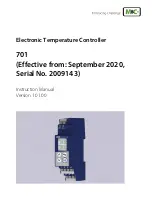
Controller functions
Page 42
RES-430
10.18
System monitoring / alarm output
To increase operating safety and to avoid faulty
heatsealing, the controller incorporates special
hardware and software features that facilitate selective
fault detection and diagnosis. Both the external wiring
and the internal system are monitored.
These features crucially support the system owner in
localizing the cause of an abnormal operating state.
A system fault is reported or differentiated by means of
the following elements.
A.)
Error message on the display:
The cause of a fault can be localized quickly and easily
with the help of the error code that appears on the
display. Please refer to section 10.19 „Error
messages“ on page 42 for a list of the possible error
codes.
B.)
Error code output via the 0 to 10VDC
actual value output (terminals 10+11):
Since a temperature indication is no longer necessary
if a fault occurs, the actual value output is used to
display error codes in the event of an alarm.
13 voltage levels are offered for this purpose in the
0…10VDC range, each of which is assigned an error
code (
ª
section 10.19 "Error messages" on page 42).
If a state that requires AUTOCAL occurs – or if the
controller configuration is incorrect – (error codes
104…106, 111…114 or 211), the actual value output
jumps back and forth at 1Hz between the voltage value
that corresponds to this error and the end of the scale
(10VDC, i.e. 300°C or 500°C). If the "START" signal is
activated in one of these states, the voltage value does
not change any more (as of SW revision 008).
Selective fault detection and indication can thus be
implemented simply and inexpensively using the
analog input of a PLC with a corresponding error
message (
ª
section 10.19 "Error messages" on
An alarm can only be reset by pressing the
"RESET" key or by switching the controller
off and then on again.
10.19
Error messages
The table below shows how the analog voltage values
that appear at the actual value output are assigned to
the faults that have occurred. It also describes each
fault and the required corrective action.
The block diagram in section 10.20 "Fault areas and
causes" on page 45 permits each fault to be cleared
quickly and efficiently.
!









































